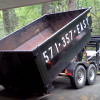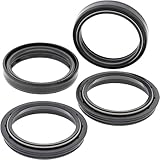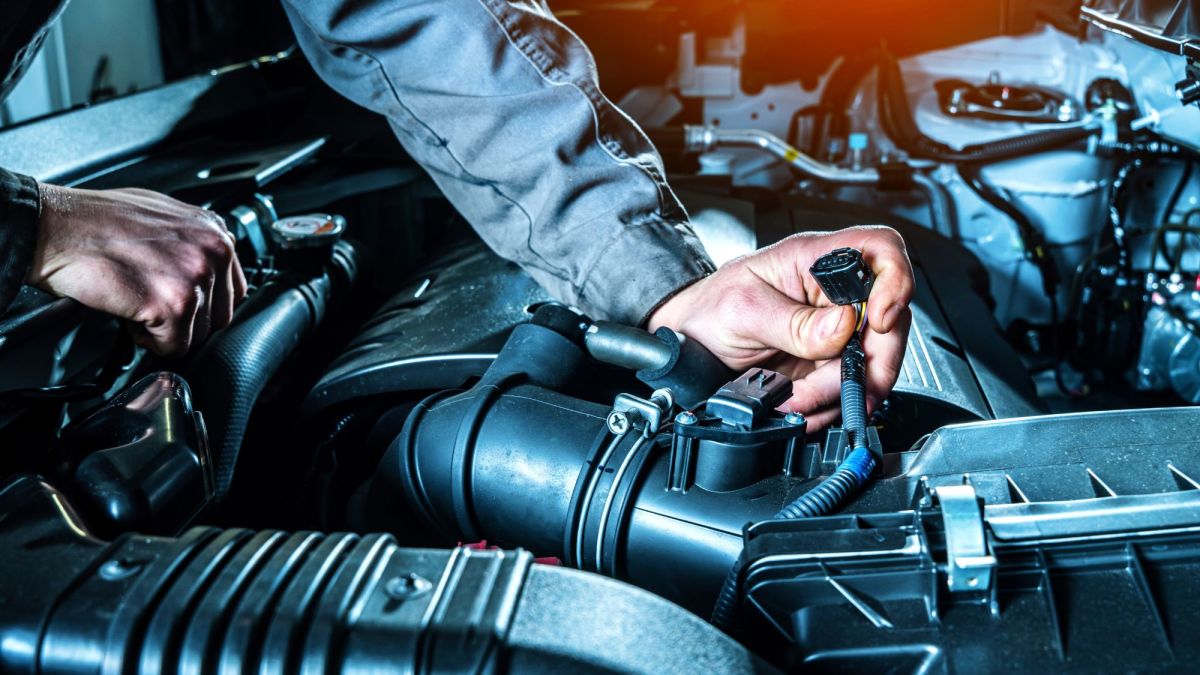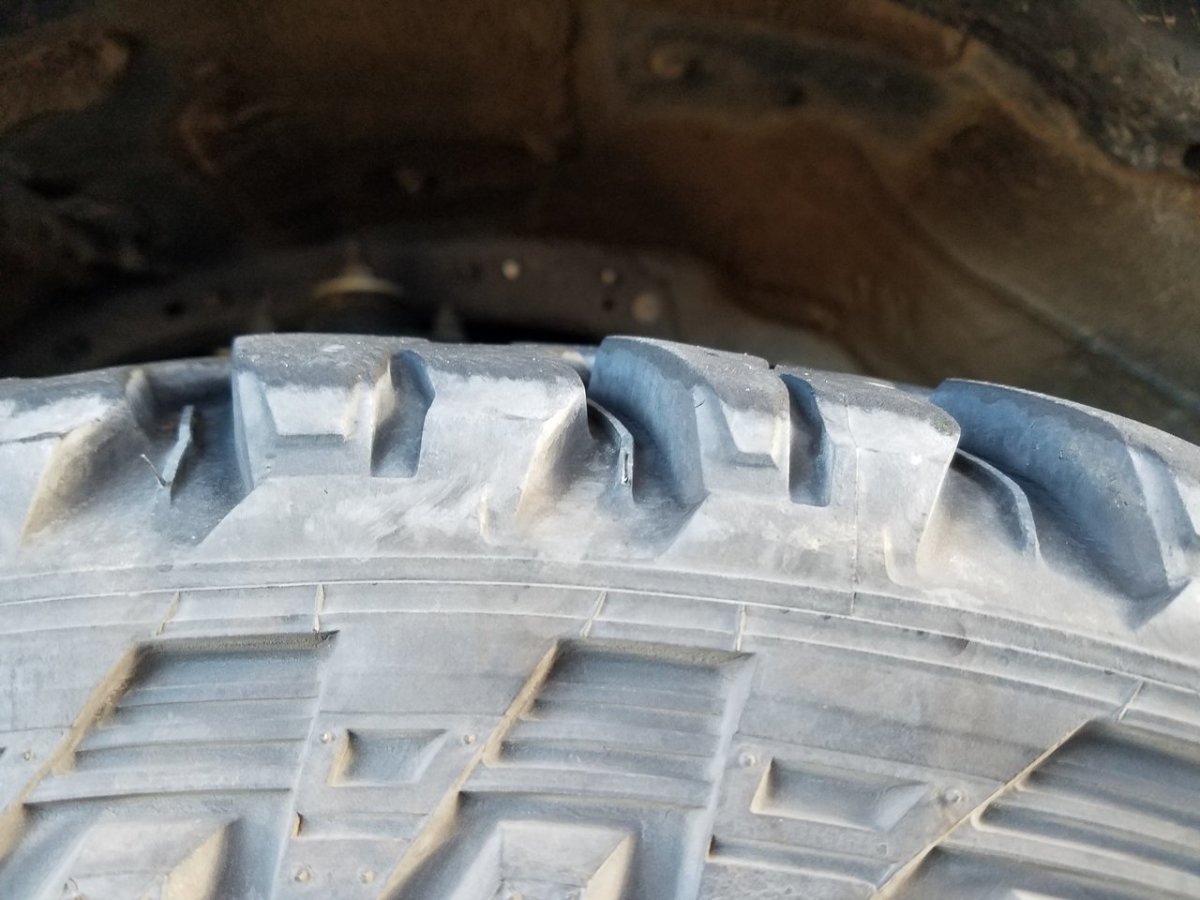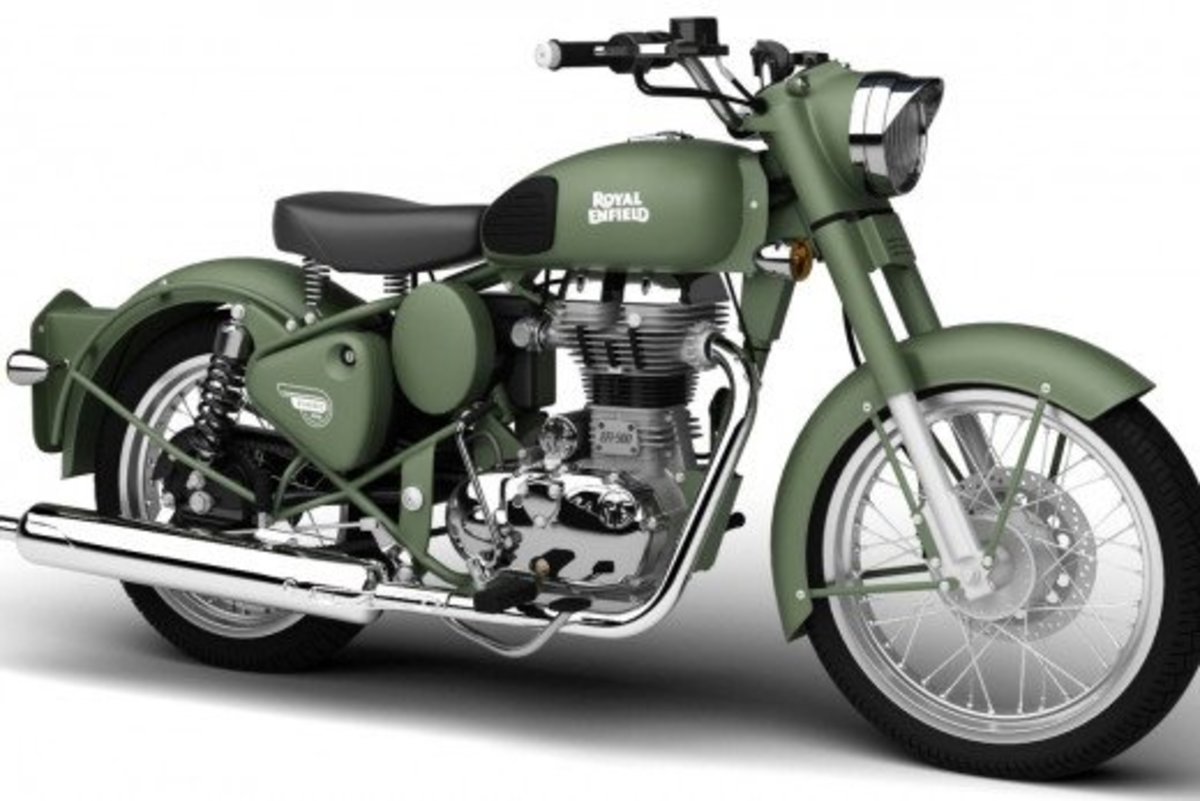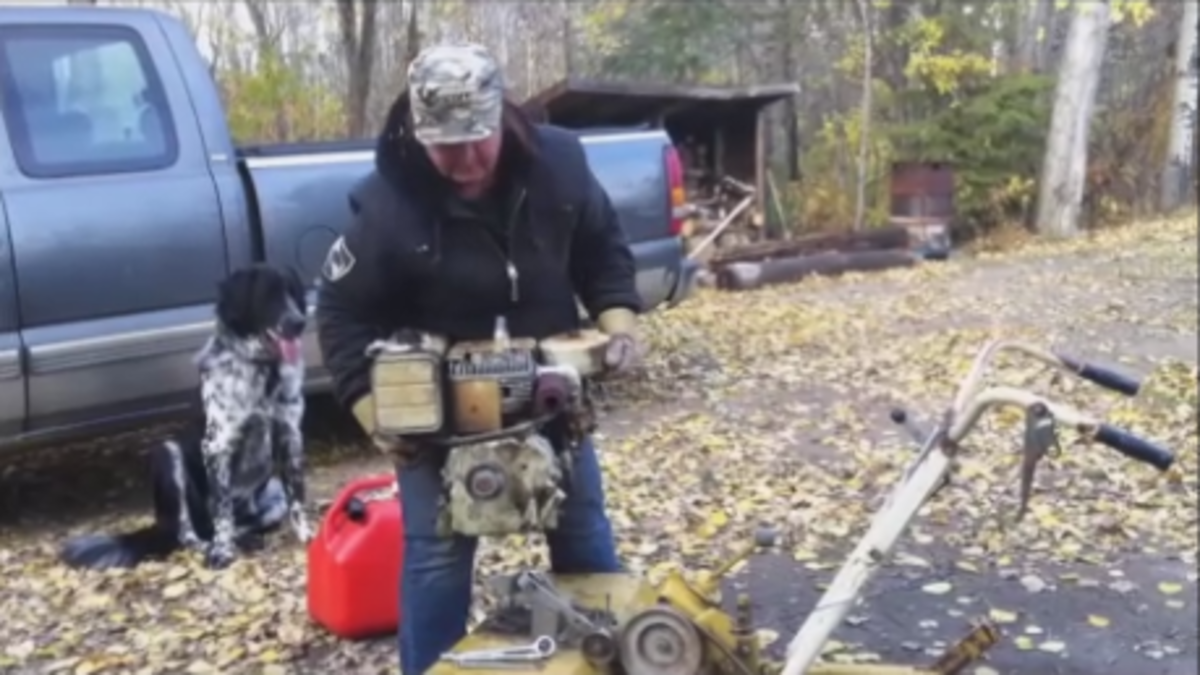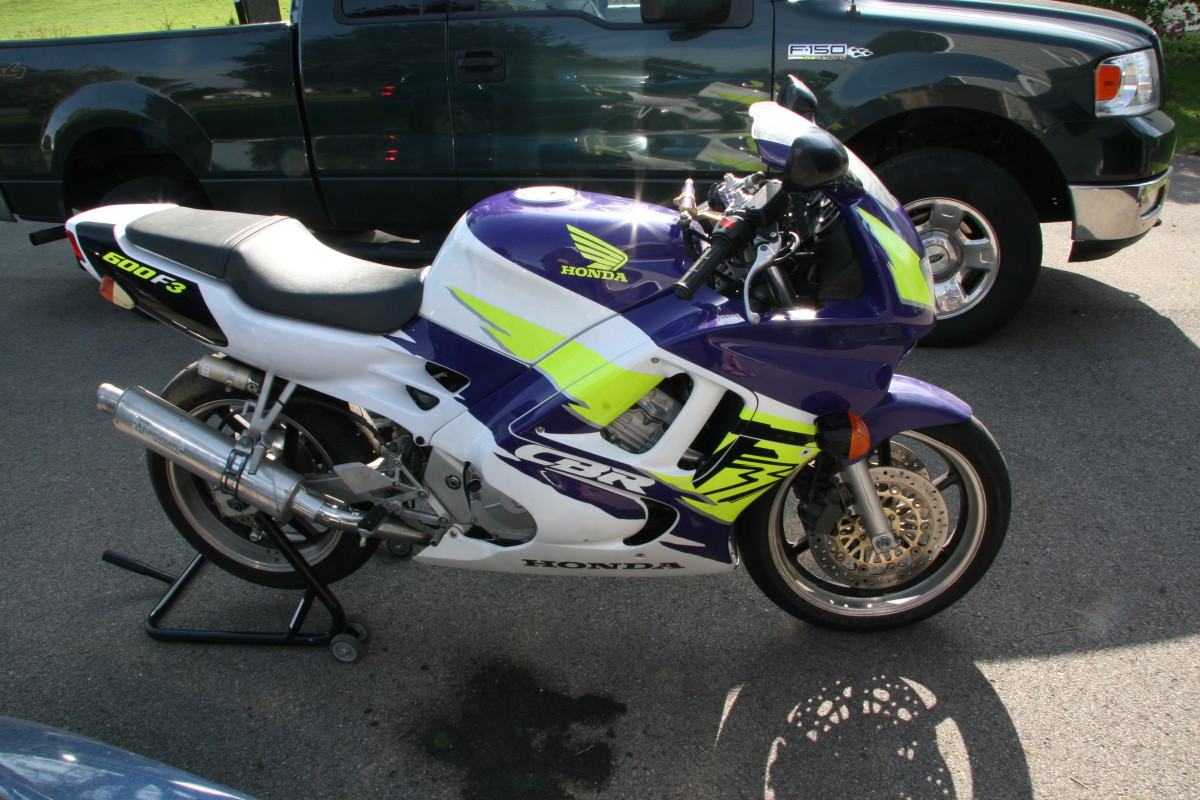How to Replace a Motorcycle's Fork Seals
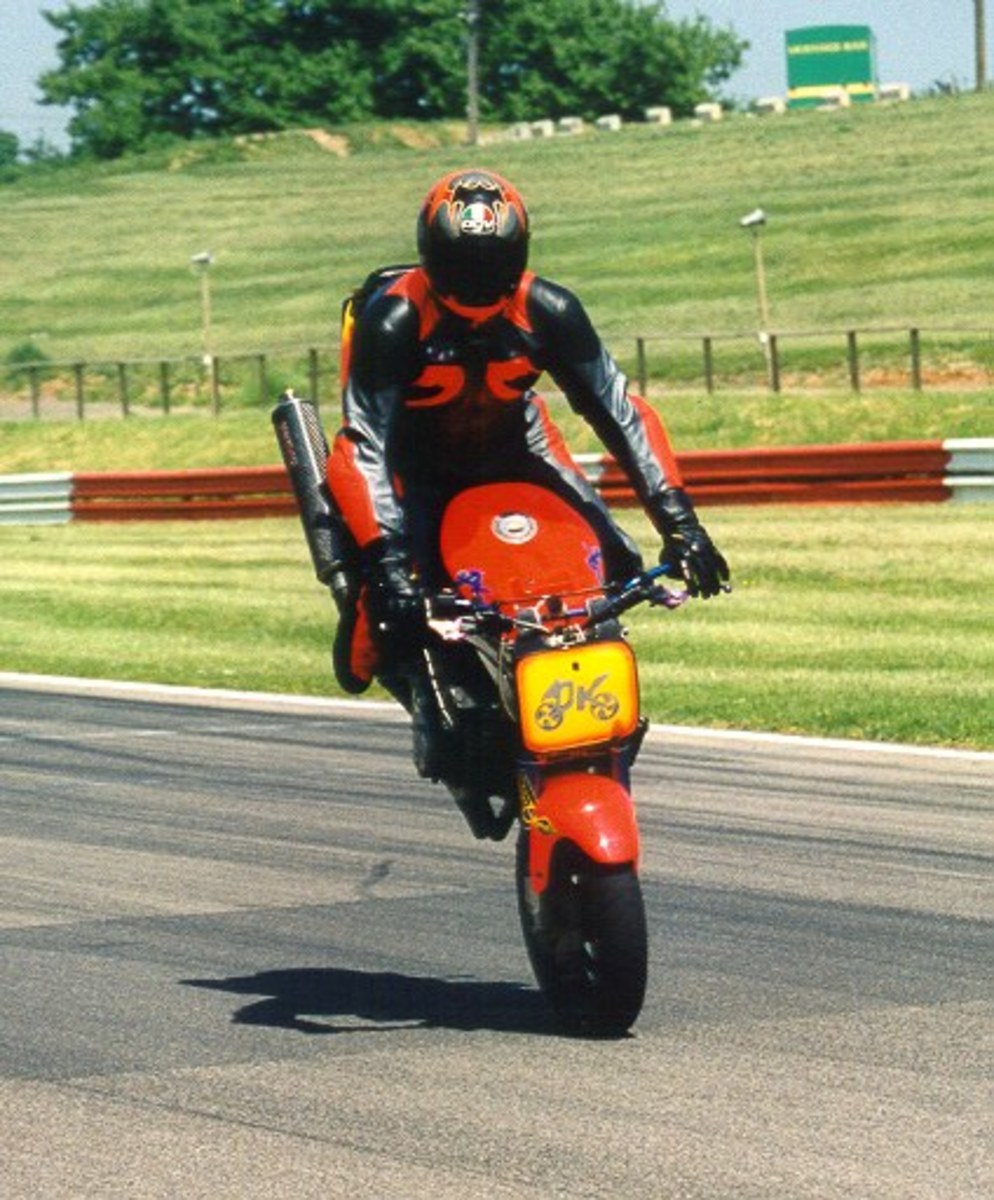
Motorcycle Suspension 101
Motorcycle Suspension systems are paramount to rider comfort and are crucial to keeping the front wheel on the ground. Without a good motorcycle suspension, rider fatigue may hinder a good day of riding, and non-optimal handling can cause the bike to not perform as needed, like a Motorcycle Stoppie or expected, and can cause a crash under braking, cornering, or both.
Motorcycle forks are comprised of fork tubes, springs, damping rods, oil, and the things that hold the oil in the tubes when everything squishes are ... the Fork Seals! Performing daily on a twisty road near you! These components are the basis of the preload, compression, and rebound needed to maintain optimal suspension performance.
As you can see by the blatant ads, a fork seal is the cheapest component of the suspension system, and when that part fails, your day is ruined. Oil leaks out of the fork, runs down the leg, drips on the brake pads and ruins them, and it's them things get REALLY interesting.
So, as a part of regular maintenance, you can opt to replace the fork seal, but all it takes is to incorrectly secure your motorcycle to a trailer and your seal is once again blown. Thus, it's simply worth having a spare set handy for when they go. As a matter of practice, I never only order one set, as there is always the chance that one is damaged, and they're so cheap.
Handy Motorcycle Tips
I would be remiss to not pass on this simple tip before you spend the next couple hours of your life on Fork Seal remediation. Suppose you're in the woods riding your favorite trail, and you happen to impact a fixed object with such force that you blow a seal. This is not an unfamiliar situation, and being in the woods, the only thing that matters is getting out of the woods. This is where carrying a roll of 35mm film and a pocket knife can save your bacon. By inserting a thin strip of the film in-between the seal and the fork, you may be able to stave off the inevitable for just long enough to outrun the bear. I don't think I'd try this on a road bike, but when things are bad, anything is a good fix. For what it's worth, vice grips can be used as a make-shift brake lever or gear shifter, too. Ensure there is one in your toolkit.
Motorcycle Fork Seal Preparation
There are thousands of different variations of Motorcycle Fork systems. To prepare for replacing a motorcycle fork seal, you may/will need the tools and materials to perform the following:
- Elevate front wheel
- Remove/Install Front Fender Bolts (optional)
- Remove/Install Front Fork Brace (optional)
- Remove/Install Front Brake Calipers
- Remove/Install Front Axle Pinch Bolts
- Remove/Install Front Axle
- Remove/Install Fork Caps
- Remove/Install Fork Damper Rods
- Loosen/Tighten Upper and Lower triple clamp bolts
- Drain oil into a pan
- Replace oil
- Wipe things clean with Rags
Motorcycle Fork Seal Replacement
1. Order fork seals, receive them, inspect them, and decide that your new parts are worthy of spending the time to disassemble your motorcycle and take it out of commission. Think about replacing brake pads, tires, and another maintenance whilst you've got the bike in pieces.
2. Upon receiving all the parts, block off a 4-hour block of time and ensure that any helper that you employ will have amble portions of their favorite music, pizza, and beverages.
3. Clean the front end of the bike with the hose for any existing dirt, and use a light solvent for any weeping fork oil. Dry the bike, and wipe off everything to start clean
4. Prepare your work space. Dedicate a horizontal surface to where you will work to dissect the forks, and place all the bits and widgets on rags, in the order of which they were removed, such that you don't have to remember how to re-install them.
5. Clean an area for the motorcycle, including the stands, and plenty of space to work around the front end. Some people use stands, some people hang straps from the ceiling rafters to hold up the bike. Place the bike in the clean spot.
6. Remove the front wheel. This could require removing fork braces, brake calipers, fenders, auxiliary lights, espresso machine, and anything else that will hinder the ability to extract the forks from the upper and lower triples.
7. Expose the fork caps by removing all the needed parts to get to the fork caps, and also hinder removal from the triples. (Don't loosen the triple bolts yet, though.) The fork caps are under significant pressure from the springs, so ensure you can break the torque, and overcome the pressure before you get too far into this.
8. Remove the fork caps.
9. With the caps off, use a long magnet or pick to remove the various washers, spacers, and other widgets, slowly and precisely, wiping each clean and placing on the rags in the order your removed them.
10. Eventually, you'll get to the springs, which are coated in oil. Slowly draw them upward, until you can get a finger in between the coil. From there, I rotate the spring with my finger inserted to force off the oil back into the fork. When drained, I grab it with a rag then place on the rag on the table.
11. If you don't know how much fork oil you need to replace, you can measure the distance from the top of the fork tube to the top of the oil. A wooden dowel works, or anything long enough to reach. (Check the ads, as there's a tool for that, too.) You can also do this later when you're able to compress the fork, then the distance is much shorter. Just know that the fork with the broken seal will have leaked fluid, so your reading may not be accurate, but at least you'll have a starting point. (You can get a more proper reading from the non-leaking fork, if needed.)
12. Loosely Install the fork caps, to prevent fluid from spilling during removal.
13. Some bikes have drain bolts on the fork. I don't like to break the torque on these, because there's no guarantee that re-installing will seal properly, the bolt won't break, or who knows what else, but since you have to pull the fork off anyway, why tempt fate. If you're feeling froggy, go for it, but I only use those if I'm doing just a fluid change.
14. Mark the location of the fork in the triple, a permanent marker is good for this. Loosen the bolts for the triples, slide the fork out of the triples. Slow and steady.
15. Again, if you don't know the amount you need, or if you want to save the fluid to reuse it (Not recommended), drain it into a clean container, measuring cup, or other graduated cylinder. This will give you another starting point for refilling, along with the previous measurement.
16. With the fork removed, remove the fork cap, slowly turn the fork over into the container and let it drain. After a good release of fluid, slowly pump the fork tubes to force the remaining fluid out of the damper rod.
17. Place a rag around the fork, and lock it into a vice, clamp or other device that will free up your hands. (If your assistant isn't double-fisting, he'll do.)
18. Use a small screwdriver to softly extract the dust cap Working slowly around the entire seal until it pops free.
19. This should expose a metal clip that holds the seal in place. Use an appropriate tool to pop the clip out of the seat (which is usually a groove in the outer tube.)
20. After the clip is extracted, pulling the fork seals is academic, and since it's already broken, there's no need to show it any mercy. But, before yanking it out, note which direction it faces. Is the spring pointing north or south, and compare it to the new seal, such that you don't install it upside down. (Unless the reason it's leaking is that it WAS installed upside down, then prepare yourself mentally to install it correctly.
21. Wipe down the seat area to remove previous fluid and debris. Inspect the inner fork tube for any burrs, knicks, or cuts, as you may want to lightly wet sand the tube to smooth out the rough spots.
22. Clean, wipe, and clean the area one more time, and then install the new fork seal the proper direction.
With that, reverse all the processes up to this point and get it all back together, and install the correct amount of fork oil. Remember, too little is always better than too much, else you'll get to repeat this task all over again.
Partial DIY effort
If you don't have the tools, knowledge, courage or if you don't mind just extracting the fork and taking it somewhere, there are plenty of shops, like R-n-R Motorcycle Repair in Sterling, VA that will do this task quickly and cheaply, in comparison to you botching the job as a first timer. If you pay them extra, like with Doughnuts, they might even let you watch.
